
Maersk Line, MSC and CMA CGM to establish an operational alliance18 June 2013 - Press ReleaseMaersk Line, MSC Mediterranean Shipping Company S.A. and CMA CGM have in principle agreed to establish a long-term operational alliance on East – West trades, called the P3 Network. The aim is to improve and optimise operations and service offerings.The P3 Network will operate a capacity of 2.6 million TEU (initially 255 vessels on 29 loops) on three trade lanes: Asia – Europe, Trans-Pacific and Trans-Atlantic.While the P3 Network vessels will be operated independently by a joint vessel operating centr
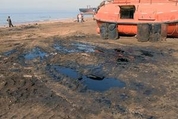
The NGO Shipbreaking Platform yesterday went online with a new website tracking ships that have been sent for environmentally unsound breaking on South Asian beaches, and allowing easier tracking of companies and nations that essentially abandon derelict vessels to substandard dismantling facilities on the shores of the developing world.Bellona,14/06-2013The coasts of South Asia are littered with ships packed with toxins such as asbestos, oil and other substances that are highly hazardous to humans and the environment. Often, the vessels are simply left for scrap, where they rust and leak, cre
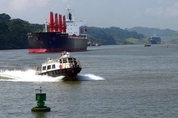
Nicaragua Government OK’s $40 Billion Canal ProjectBYREUTERSONJUNE 13, 2013Ships transit the Panama Canal. Photo (c) Canal de Panamá.By Ivan CastroMANAGUA, June 13 (Reuters) – Nicaraguan lawmakers granted a 50-year concession to a Chinese company on Thursday for it to design, build and manage a shipping channel across the Central American nation that would compete with the Panama Canal.The $40 billion proposal by HK Nicaragua Canal Development Investment Co Ltd’s (HKND Group) calls for linking Nicaragua’s Caribbean and Pacific coasts and includes plans for two free-trade zones, a railway, an o
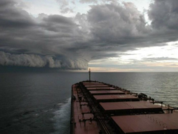
Rates to ship dry bulk commodities including coal and iron ore extended a decline to the lowest level in three months amid a surplus of ships.Thursday, 06.Jun.2013, 00:08 (GMT+3)Rates to ship dry bulk commodities including coal and iron ore extended a decline to the lowest level in three months amid a surplus of ships.The Baltic Dry Index slid 0.5 percent to 801 points, its 19th straight drop and the lowest since March 4, according to the Baltic Exchange, a London-based publisher of freight rates. The biggest change in rates was for Panamax ships, each able to haul about 75,000 metric tons of

Top three muscle out othersMaersk Line, MSC and CMA CGM now have such big economies of scale in the transpacific that they can ride out the current eastbound freight rate war more comfortably than the rest of the pack, should they choose to do so.Recent vessel deployment in the transpacific by Maersk Line, MSC, and CMA CGM suggests a clear focus on economies of scale. Instead of trying to be ‘all things to all people’, their strategy appears more directed towards only calling at ports where their ships have a clear competitive advantage.Gone are the days of trying to appeal to all customers at
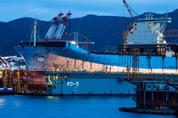
Forty-thousand alarm clocks buzzed as one, waking an equal number of workers for work at Daewoo Shipbuilding Marine Engineering (DSME), the world’s second-largest shipyard, just before dawn on Geoje Island, along South Korea’s southwest coast. As the sun rose, they marched out for another day’s labor at the company’s immnense dry docks, dominated by the soaring arc of a Brobdingnagian hull. Giant barge mounted cranes float past the docks, where they had laid each mega-block section, enormous, pre-fabricated ship segments onto a blacktop larger than a Walmart parking lot.The enormous ship, due
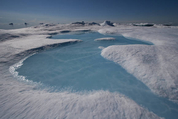
The Polar CodeThe idea of a strict mandatory code for shipping in polar regions, agreed and en- acted at IMO level, should have general appeal to the shipping industry as well as to the various governments and NGOs that have a strong interest in protecting the environment. Failure to generate and enact such a code in a timely manner at IMO level is likely to result in individual states enforcing their own regulations for shipping operating in their waters. They will undoubtedly vary from one state to another, making compliance unnecessarily complicated. A strong, uniform code en- forced throug
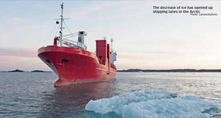
SHIPPING TRAFFIC The decrease of polar ice as the planet warms has opened up the Arctic region to a massive increase in shipping traffic, which now threatens to cause a proportionately greater environmental impact, writes David Phillips, editor of the Journal of Ship Hull PerformanceDue to greater human activity, the poles are under increasing threat. Those who are genuinely concerned about the sustainability of the planet would like to see this human activity managed to allow the poles to remain as unharmed as possible.These areas are also particularly sensitive to pollution. The ice in the p
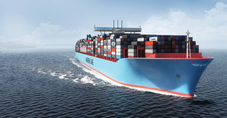
CARRIERS: The price on large and more environmental container ships has gone down since Maersk Line in 2011 was the first carrier to order 20 Triple-E ships. New data from Clarkson shows that China Shipping Container Lines are paying significantly less for ships of the same size.BY OLE ANDERSENSince Maersk Line in 2011 ordered a total of 20 of the world's largest container ships yet, the Triple-E ships with a capacity of more than 18,000 containers (teu), the price on these types of ships has decreased significantly. New data from British brokerage firm Clarkson shows that Maersk Line has paid
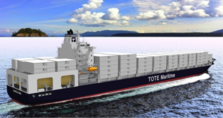
Earth Day has been an American institution since its founding in 1970. Each year, we recognize the many efforts made across the nation to reduce our carbon footprint and move toward a greener economy.This year, with our economy growing and shipments of everything from raw materials to parts and equipment to finished products increasing, I'd like to call attention to recent improvements in the shipping industry.For example, Totem Ocean Trailer Express (TOTE), a marine transportation company, is planning to build two liquefied natural gas (LNG)-powered container ships to operate between Jacksonv

The White House released a plan on Tuesday aimed at protecting oceans, coastal and Great Lakes environments around the United States while safeguarding related businesses that support more than 44 million jobs.The plan drew criticism from some Republican lawmakers who called it bureaucratic overreach but was lauded by environmental groups as smart management that supports economic development.The National Ocean Policy Implementation Plan is meant to put into practice the National Ocean Policy, established by President Barack Obama in 2010. It will involve some 27 federal agencies, departments
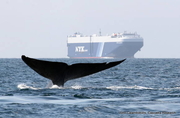
The waters off the coast of California are heavily trafficked, not only by ships, but also by those other seagoing behemoths, the great whales. Blue, fin, humpback and gray whales all migrate up and down the West Coast. When whales and ships come into contact, however, the results can be fatal. Ship strikes are a significant cause of mortality for these species, all of which, other than the gray whale, are currently listed as endangered.If ships knew when whales were in the area then they could steer clear or temporarily slow down. But whales spend most of their time hidden beneath the waves.
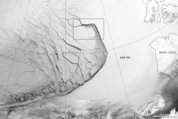
The Visible Infrared Imaging Radiometer Suite (VIIRS) on the Suomi NPP satellite captured this view of extensive sea-ice fracturing off the northern coast of Alaska. The event began in late-January and spread west toward Banks Island throughout February and March 2013.Visualizations of the Arctic often give the impression that the ice cap is a continuous sheet of stationary, floating ice. In fact, it is a collection of smaller pieces that constantly shift, crack, and grind against one another as they are jostled by winds and ocean currents. Especially during the summer—but even during the heig
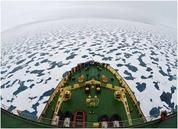
By the middle of this century, ships should be able to ferry cargo between Europe and Asia by cutting straight across the North Pole, cutting their travel times in half. Geographers at the University of California, Los Angeles, have combined sea-ice coverage predictions with geographical and transportation models to compute this and other Arctic sea routes for the first time.By midcentury, as the warming climate decreases Arctic ice levels, ice over the North Pole will be so thin that ice-breaking ships will be able to cut through it, but only in late summer, says Laurence C. Smith, a professo
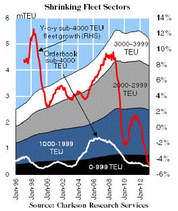
The total capacity of the containership fleet has almost quadrupled since the turn of the century, to stand at 16.3m TEU at the start of March 2013. However, the total capacity of the sub-4,000 TEU fleet peaked in December 2008. Scrapping remains at elevated levels, while the orderbook for the smaller size sectors is unmistakably thin. As such, the smaller fleet sectors look likely to continue shrinking, at least in the short-term.One of the key reasons for this pattern of fleet development has been the dramatic deceleration of deliveries to the smaller size sectors as upsizing continues. The